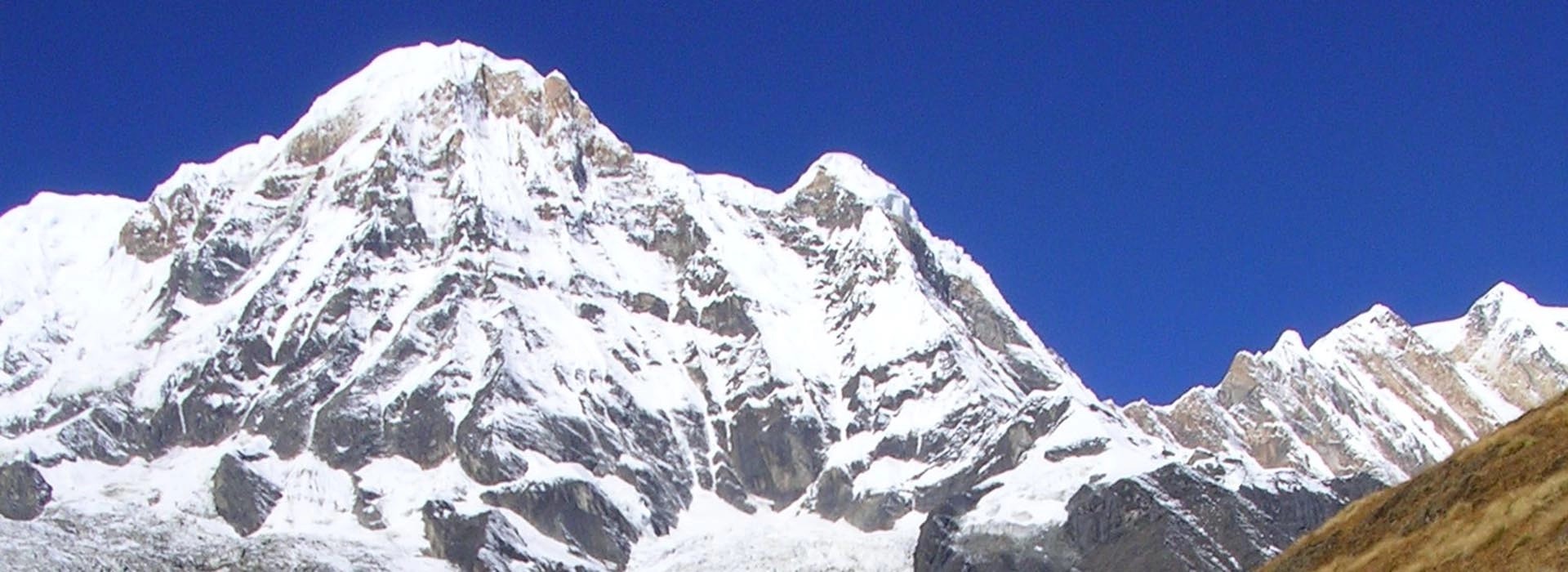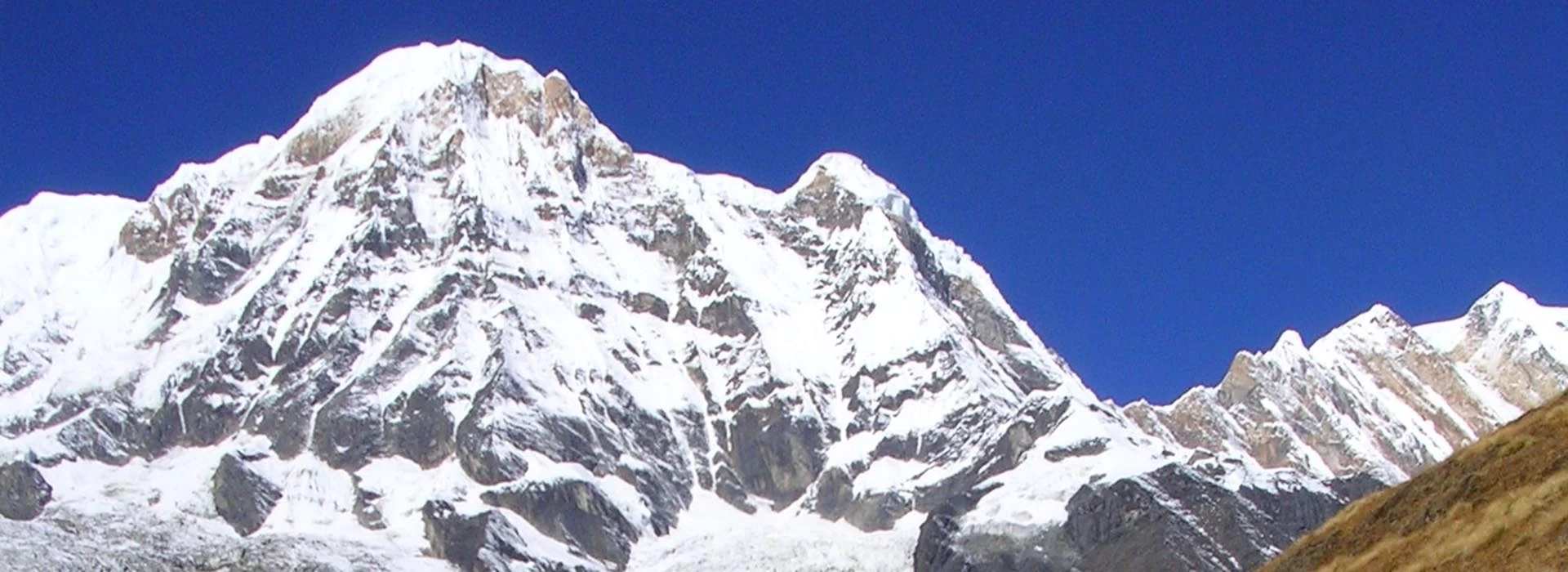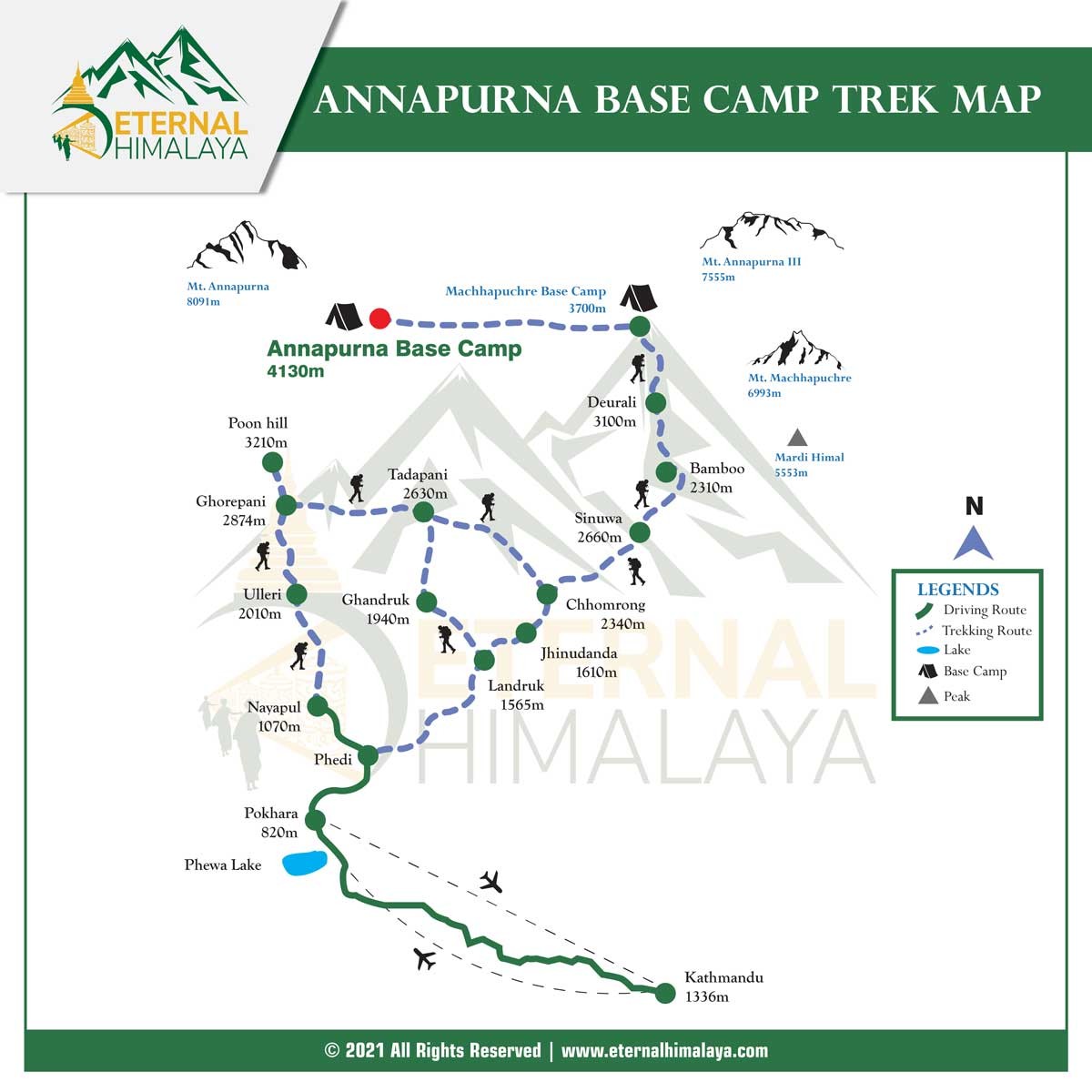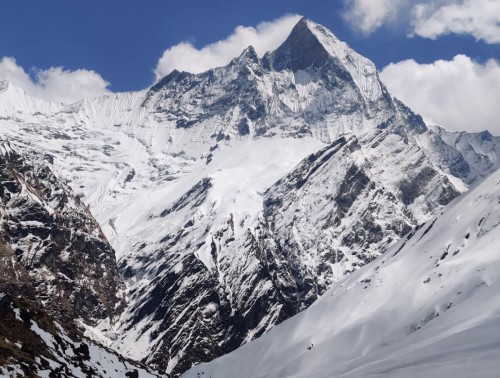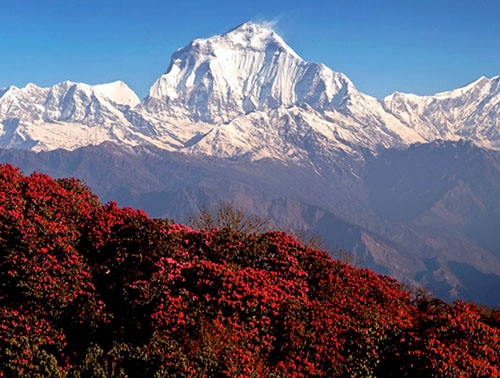Difficulty or Trip grade: Physical Fitness and Health
Annapurna Base Camp (ABC) is rated as a "Moderate-Difficult trek." The distance for the hiking section is shorter compared to EBC. Trekkers can expect to be walking for about 5 to 7 hrs a day and taking regular breaks.
This trek can be taxing where you will meet steep routes and have to walk uphill and downhill. Moreover, you will be hiking on long straight roads and climbing the stairs. It would be an advantage for those who have previous experience in trekking in the Himalayan region. Moreover, trekkers with good physical fitness and good health are capable of going to ABC trek. To achieve a fit body you have to prepare your body 8 to 12 weeks before trekking. Increasing cardio endurance will improve your stamina, increase oxygen intake and build your body strength.
We forbid clients who have a medical history of lung, heart, and any kind of blood disease and should inform us or consult their doctor before booking the trek.
Accommodation and Amenities
Annapurna region has plenty of lodges/teahouses on the trekking routes with basic facilities. Furthermore, you will find better quality lodges at the lower elevations of the Annapurna region (Chomrong, Ulleri, Ghorepani, and Jhinu Danda), where they have private rooms with attached bathrooms. As you ascend higher the quality of lodges declines. At the higher elevation of the Annapurna region (ABC, Bamboo, Tadapani, or above) they generally have twin sharing rooms and shared bathrooms which are mostly outside. However, you will have a warm, clean and comfortable bed throughout the journey. Most of the lodges on ABC routes have squat toilets but Western-style toilets are also available nowadays.
Hot shower facilities are also available on the lodges and it will cost US$ 2 to 5 peruse. The price will increase with the altitude. A bucket shower is most common in trekking areas, a bucket filled with hot water will be placed in the bathroom.
We will provide accommodation for 3 nights in Kathmandu and 2 nights in Pokhara in a hotel with a bed and breakfast basis only. Moreover, your room will have an attached bathroom, 24hrs hot-water shower facility, TV, Wi-Fi, and laundry services. To ensure the comfortable and relaxing stay of our clients before and after the trek, we have chosen the best service-providing hotels for your overnight stay.
Wi-Fi service is offered by the lodges for a small charge. Most of the Annapurna region teahouses have electricity through which you can charge your batteries and devices but you have to pay an extra cost for the services.
Food and drinking water on ABC trek
ABC trek is very taxing and needs a lot of physical energy, making your body feel exhausted. To re-energize and fuel your body, you need nutritious meals to keep going. You will have a variety of food options including local, western, and Asian cuisine, but the menu items get shorter and more expensive as we trek higher. However, lodges/tea houses served warm, wholesome, and nourishing food.
There are a lot of breakfast, lunches, and dinner options for you to choose from. Some of the items are as follows:
Breakfast
Pancakes, Eggs, Corn Flakes, Tibetan bread or chapati, Oatmeal, French toast, Toast with peanut butter, butter, jam, honey, cheese, Muesli, Bread, Local Tsampa porridge, Vegetables, Fruits, Hot drinks (varieties of coffee, teas, hot chocolate, etc)
Lunch and Dinner
Steaks, Macaroni dishes, Momo (dumpling), Sandwiches, Dhal, Bhat (rice)and Tarkari, Pasta, Sherpa stew, Tibetan bread, Variety of Soups, Thenthuk Spaghetti Noodle, Potatoes items, Thukpa, Vegetable curry, Snacks (Papad, Prawn), Desserts (Rice pudding, Apple pie, etc), pizza (Tomato, Mushroom, Mixed), Hard drinks, egg/chicken/meat dishes, etc
All your standard meals (Breakfast, Lunch, and Dinner) during the trek are provided (included in the package) but you only have to pay for your snacks and table drinks (alcoholic/nonalcoholic beverages).
Eating fresh vegetables and drinking liquids such as tea (ginger tea, green tea, lemon tea, and hot lemon) and garlic soup are highly recommended for high-altitude treks. Avoid meat (non-veg items) throughout the trekking journey as meat is not hygienic and healthy enough to consume. Trekkers should also avoid alcoholic drinks, and dairy products like cheese items, hot chocolate, and caffeinated items.
Lodges supply boiled water for drinking at a cost. Since plastic bottles are banned in the Annapurna region, you cannot buy or take bottled water (mineral water). Moreover, you can either buy and fill your water bottle with boiled water from lodges or filter water with water purifying pills or gadgets.
When to go for an ABC trek?
It’s possible to hike to ABC all year round but weather can be a problematic factor for the trekkers. To get the best views and fewer challenges for your comfort while hiking, we advise you to travel in favourable weather conditions. Despite limited views and bad weather, thrill-seekers and adventurers hike during the winter and monsoon seasons as well. So, Eternal Himalaya operates the trek throughout the year for enthusiastic trekkers. Spring and Autumn are the most suitable seasons to hike for ABC because during this time the trekkers can enjoy spectacular vistas with clear sky and a good atmosphere.
Here is a summary of the weather conditions during different seasons of Annapurna Base Camp region’s high altitude:
Spring season (March-May)
Spring is considered to be the most favourable season for the Annapurna Base Camp Trek, and the busiest trekking season starts after March and by April. During these months of spring, the climate becomes mild and temperate along with less rainfall which makes the perfect trekking condition. Then the temperature rises slowly from mid-March up to mid-May. At this time, ABC's temperature rises and falls between 10°C to 0°C. Compared to the upper regions, the lower regions are warmer.
Pre-monsoon weather is moderate with the unclouded skies and trekkers can enjoy the crystal clear mountain vistas along with a suitable atmosphere and good visibility. The trek route looks inviting as various beautiful rare Himalayan flowers bloom such as rhododendron flowers of red, white, and pink colours.
Summer season (June-August)
In Nepal, June to August is the summer season which happens to coincide with the monsoon. The day temperature usually ranges from 10 to 23°C at high altitudes and comparatively gets colder at night ranging from 5 to 10°C.
The temperature is high at high elevation and yet the trails are wet and slippery because of heavy rainfall making it more dangerous to trek. Afternoons are cloudy and clouds fade away at night but mornings are often clear. The vegetation flourishes during summer and adds greenery to nature.
Autumn season (September-November)
Due to low precipitation, moderate temperature, and mild wind, it's one of the perfect seasons to trek to ABC. At the time of this season, the day will be sunny as the sun shines brightly with clear faded clouds providing good visibility to admire awesome views of the mountain scenery. The skies at night are even clear and you will be granted a glorious night sky.
In early September the monsoon will be over then the day's weather will fluctuate between warm to mild. During the daytime temperature will reach up to 20°C whereas the nights are colder with around 5°C temperatures.
The green vegetation dried faded its colour, and turned to golden/ amber landscapes. The contrast against the blue skies complements each other. You can also enjoy the festivals of Dashain and Tihar around this time.
Winter season (December-February)
ABC trek during winter is quite popular among the trekkers. Although it's cold to trek during this season, some passionate hikers are thrilled about it. In winter the temperature can drop extremely low to -10°C. The weather in the Himalayas can frequently change as it is unpredictable. The coldest begins in December and lasts until early February. After late February, the weather slowly warms up.
Daytimes are warm with enough sunlight compared to nighttime. Then winter skies are usually clear and mountain views are covered with snow caps looking at their best despite being the coldest month. It's better not to trek in this season, especially the beginners.
Travel Insurance
Annapurna Base Camp Trek is full of adventure and along the way, your journey gets exciting and a bit challenging. With these great adventures and challenges come potential risk factors such as altitude sickness, other unforeseen events, sudden climate change, and natural disasters like avalanches, landslides, etc. The risks involved during trekking are unpredictable, so it’s better to have travel insurance ready before booking the trek. All the trekkers are required to provide a copy of their complete travel insurance policy to Eternal Himalaya. The policy of travel insurance must cover emergency medical and medical repatriation - including helicopter rescue and evacuation expenses at high altitudes (up to 6,000m).
Eternal Himalaya does not sell insurance policies. However, we can recommend insurance companies to assist you based on your (client’s) experiences.
Our clients must send their detailed insurance information after booking the trek. In case of emergencies, Eternal Himalaya will use your insurance policy and information documents to deploy a helicopter to bring you back safely from a high altitude. These travel insurance documents help us to quickly arrange rescue operations effectively, transfer for emergency medical help, etc. Please make sure to check whether your insurance policy includes the cost of mountain rescue service while trekking at the highest elevation.
Before buying travel insurance, the clients must call and recheck to ensure that insurance companies have helicopter rescue and evacuation up to 6000m. Don't trust what insurance companies have shown on their websites.
Safety Precaution for Annapurna Base Camp Trek
Annapurna Base Camp is a very popular trek among trekkers and has always grabbed the attention of adventurers, mountaineers, thrill-seekers, and rock climbers all around the world.
The trails are demanding at some point; nevertheless, the Eternal Himalayas will make sure to take care of their clients and make them feel secure, comfortable, and safe throughout their journey.
Our guides have undertaken an intensive Wilderness First Aid Training.
- Trek leaders/Guides are very professional in their work and can tackle any difficulties.
- Carry first aid boxes which contain necessary medication, good quality gloves, masks, sanitisers, bandages, etc.
- Throughout the trek, they will motivate and encourage you.
- Keep tabs on Food and Accommodation for hygiene.
Nepal Tourist Visa Info :
All foreigners, excluding Indian nationals, will require a visa to enter Nepal. However, European countries can obtain visas on arrival at the Tribhuvan International Airport, Ktm, Nepal.
Passport validity is required for at least 6 months and should be beyond the total duration of the trip. Also, require a passport-size photo for my visa application. The cost of a Nepal Tourist Visa differs according to the number of days it is issued. The Nepal Tourist Visa fee is USD 30 for up to 15 days. For up to 30 days the visa costs USD 50 whereas the visa fee for 90 days costs USD 125.
Citizens of SAARC and China will receive a free visa. Some countries' citizens may not receive an on-arrival visa and these countries are Ghana, Swaziland, Cameroon, Liberia, Ethiopia, Palestine, Nigeria, Zimbabwe, Somalia, Afghanistan, and Iraq. Therefore, nationals from these countries can contact their local Nepalese embassy.
For more information related to visas search at https://www.immigration.gov.np/
Immunization Certificate/Vaccination
Vaccination against malaria, cholera, yellow fever, tetanus, typhoid/paratyphoid, BCG tuberculosis, hepatitis, meningitis, rabies, dengue fever, giardia, and polio is recommended by us. However, the requirements for the vaccination keep changing depending on the situation. In case of any current changes in vaccination requirements, you have to be up to date and check the situation of the place before travelling. Consult your doctor or GP at least 2 months before the trek about the immunization you require to travel safely.
The travellers must submit the ‘Fully Vaccinated Covid-19' immunization certificate.
Currency Exchange in Nepal
Nepali currency (Rupee) is a closed currency; therefore, you can only exchange your foreign currency upon arrival in Nepal. Since US dollars are widely accepted, we suggest travelling with US dollars. The majority of banks do not accept foreign currency that is old, torn, or faded. It is advisable to carry new, clean and untorn notes to obtain the local currency ‘Nepali Rupees (NPR)’.
The foreign currency can be converted through local banks or a bank ATM and authorized ‘’Money Changers’’ or ‘’Foreign Exchangers (FOREX)’’ around Thamel in Kathmandu. Alternatively, you can exchange a small amount of cash at all the hotels in Kathmandu too. Every morning the money changers will post the ongoing rates on their board which is placed outside of the store. The rates don't vary that much from store to store.
Some of the ATMs are open 24 hrs a day and accept international cards; moreover, most ATMs will charge a usage fee on each transaction. Cash from ATMs is given out in Nepali currency (NPR) only. In Nepal, there is a limit on how much amount of cash you can withdraw per transaction. If you are using a foreign card, the maximum limit of withdrawal amount will be 35,000 for a 500 rupees processing fee. However, the withdrawal amount varies depending on the bank and the limits often range from 10,000 NPR to 30,000 NPR.
A service fee charge of 4% or more will be imposed depending upon the banks if you utilize the money exchange facility at financial institutions and banks.
On the trek, there are no money exchange services or banks. Furthermore, there are some ATMs available in Jomsom on the Annapurna circuit trek but are not reliable. So, we suggest you exchange your foreign currency in Kathmandu or Pokhara before you depart for the trek, as you will get a more favourable exchange rate. Plus, it is a far more convenient, easier, and safer option. Since the tea houses/lodges of trekking regions prefer local currency, we recommend you take a sufficient amount of Nepali currency on the trek for personal expenses.
# We advised you to avoid the airports and hotels to make your currency exchanges, for the best rate.
Trekking in-group/singles
We handle all group sizes whether it be small (private trek) or large-size trekking groups. Group discount is applicable when your group consists of more than 5 people and should have your person (family, friends, or colleagues) in the team otherwise the price remains the same for private touring or group joining. If you are interested in joining the fixed group for this trip please keep checking the departure link when it's available we will send you complete info (date and price) related to the trek or you can book an entire private trip at a reasonable cost. Every group will be led by a team leader/ guide and one porter for two trekkers. In case your group exceeds more than 10 people we will provide an assistant guide.
Responsible Travel
Eternal Himalaya has been collaborating with the Kathmandu Environmental Education Project (KEEP) to reduce the negative impacts associated with environmental degradation. We are eco-conscious about the growing environmental pollution of the Annapurna region. We organize safe and ecologically sustainable treks by providing education, and methods and raising awareness to protect the unique ecosystem of our country.
Eternal Himalaya Hiking Team
Our expert guides will escort you throughout the trek to make your journey enjoyable and comfortable. Every single guide of our company is well-experienced, trained, and licensed. They have been climbing and trekking by leading a group for many years.
All of our crew members have what it takes to lead a successful trek. We value our staff members and take good care of them. Each staff member is provided with good payment, insurance coverage, necessary equipment, gear, meals, transportation, and accommodation during the trek. Medical care is also provided by us in case of an injury or illness.
Our crew members' qualities are:
- Excellent interacting skills and fluent in English and other major languages)
- A certified Trekking Guide
- Knowledgeable about the facts and keep track of weather forecast
- Well-trained in Rock climbing
- Undertook the Biodiversity and Conservation course
- Wilderness First Aid Training
Luggage
The weight allowance for Nepal’s internal flight is 15 kg as domestic airlines operate strict limits of a maximum of 10 kg for main luggage and 5 kg for a backpack. If your luggage exceeds 15 kg, you have to pay for the excess baggage weight which will cost USD 1 or more per kg depending on the region.
Normally, we assign one porter to carry the main luggage of two trekkers during the trek. The weight limit for the luggage is 9kg per trekker. As one porter will be carrying the weight of the two trekkers, the combined weight will be 18kg. We care for the porters and against exploitation, so we do not overload our porters. If you need an additional porter to carry your excess luggage, we can arrange the porter for an extra charge. Moreover, trekkers should carry their backpacks by themselves and their backpacks are packed with valuables, possessions, and important belongings needed during the day. It is advisable to carry the essential items only, as you can leave and store any excess luggage either at your hotel or at the Eternal Himalaya office's storage room for free. We will keep your baggage safely stored.
Before we begin our trek, we will recheck the equipment, luggage, etc in the course of briefing at our office.
Tipping on the trip
Travellers can be rewarded with tips at their discretion based on the quality of services provided to them. As a part of our Nepali culture, Nepalese people accept tips as a way to express their appreciation.
Due to Western influence in the trekking sector, trekking staff such as porters and guides have become accustomed to expecting a tip from clients. If you’ve had good service and a wonderful experience during the trip and want to tip our porters and guides, we recommend giving tips collectively as a group at the end of the trip.
Safe Booking Payment Gateway
Eternal Himalaya Adventure Pvt. Ltd is a well-certified trek and tour company in Nepal and also, a member of the Nepal Mountaineering Association (NMA) and the Trekking Agency Association of Nepal (TAAN). Therefore, you can safely book and pay with us for your preferred trip package without any doubts.
To book a trip first and foremost you have to fill up a booking application form then while booking you are required to pay 20% (non-refundable) in advance for booking confirmation before the trip. Please note that you must send all necessary documents such as passport-size photos, passport copy, travel insurance policy, and arrival and departure flight details within a week after booking.
The convenient and safe ways to pay are through bank transfers and online payment. The remaining cost of the trek can be paid in cash or by bank transfer before the beginning of the trek. Moreover, we will also forward the payment details to your email and vice versa. While filling out the booking application form, the clients must mention the details about modes of payment clearly and should provide all the required details about the credit card.
Last-minute booking on ABC Trek
Booking is the best way to execute the whole trip without any hassle. However, Eternal Himalaya does provide a last-minute booking facility for those who are unable to book in advance. For this clients are required to pay 100% of the trip cost within 24hrs before the trip departure.
In the case of last-minute booking, we cannot be responsible for the delays because of events which are beyond our control, such as weather changes, unavailability of lodges, and other unfavourable conditions which lead to trip delays and flight cancellations. Despite these unfavorable circumstances we do our best to manage a trek at any time.
For more information, call us at +977 9851254672 (Ram Sharan) or email us
Trip extension
Apart from the trek, our company organizes other trips within Nepal, Bhutan, and Tibet. If you want to stay for an extra day after the completion of your trek, we can arrange (tours and other adventure activities) to extend the trip for the clients. When the trek ends, you will have spare time and you may want to go for adventure activities such as river rafting, cycling, paragliding, zip flyer, bungee jumping, etc. You may as well explore exotic places around Kathmandu and many more.
Feedback
You may want to give us feedback about our services after completing your trek. Please feel free to react and comment whether it is a positive or negative response we will take it as constructive criticism. After completing your Annapurna Base Camp Trek, our company will organize a farewell dinner and present you with a trek achievement certificate.
Flexibility
The clients can customize the ABC trek itinerary according to their liking, plus fixed departure dates can be modified or rescheduled to your convenience. We request our clients to review the departure dates. If dates do not fit your travel plans, contact us then we will rearrange the trip as you desire.
Please note that in case of unforeseen events such as bad weather or unavailability of lodges can lead to changes in the itinerary mentioned above. Furthermore, a new itinerary will be planned by the trek leader through group discussion.
Equipment list for Annapurna Base Camp Trek
Here is the complete essential list of equipment for the Annapurna Base Camp trek. The weight of your luggage is limited to up to 9 kg, so, therefore, we advise you to carry only essential items. In case you require to carry more than 9 kg, we can arrange porters.
Head Wear
- Warm insulated winter hat / Wooly hat
- Sun hat / Wide-brimmed hat
- Scarf
- Neck gaiter or Fleece Buff (Optional)
- Neoprene face mask (Optional)
- Balaclava / Bally ski mask / Monkey cap (Optional)
- LED Headlamp × 2 and spare batteries
Face/body care items
- Sunscreen with SPF above 50
- Sunglasses with UV protection × 2 pairs
- Face/body cleansing wipes (biodegradable wipes)
- Moisturizer lotion for face/body
- Lip balm
Hand Wear
- Liner gloves × 2 pairs
- Fleece gloves × 2 pairs
Body Wear
- Hiking shirts × 2 pairs
- Full-sleeved thermal undershirts × 2 pairs
- Fleece jacket
- Waterproof and windproof hooded rain jacket
- Down jacket (thick down jacket for winter treks)
- Polypropylene underwear × 5-6 pairs
- Synthetic material hiking pants × 2 pairs
- Long johns × 2 pairs
- Sweater
- Waterproof jacket and pants
- Lightweight cotton pants
Foot Wear
- Woollen socks × 6 pairs (thick light socks)
- Lightweight shoes/scandals
- Hiking Boots
Essential gear
- Backpack
- Day pack for basics
- Waterproof covers for your bags and packs
- Thermal water bottle (hydration bladder often freezes in winter)
- Sleeping bag (rated at least 0°C for summer and -15° for winter)
- Water purification tablets, drops or portable water purifier/filter bottles or, gadgets
- Trekking pole
- Crampons
- Large plastic bags and stuff sacks
Personal Toiletries
- medium size towel
- Toothbrush
- Toothpaste
- Biodegradable bar soap
- Deodorant
- Nail clippers
- Small mirror
- Toilet papers
- Shampoo
Personal accessories
- Money
- Watch
- Cell phone
- Camera
- Lighter
- Pocket knife
Extra items / Travel gear
- First aid kit
- Extra passport photos and photocopies of passport Travel insurance documents
- Notebook and pen
- Books
- Personal entertainment
- Binoculars
- International electrical adapter


